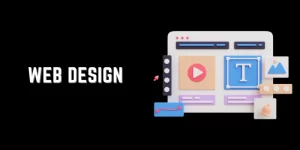Typography is a crucial element in web design that significantly impacts user experience, readability, and aesthetic appeal. The art of selecting and arranging type can convey a website’s tone, guide readers’ attention, and enhance the clarity of the message. This blog will explore how to effectively use typography in web design, focusing on font selection, hierarchy, readability, responsiveness, and creative applications. If you are interested in learning Web Design, you can join the Web Designing Course in Chennai at FITA Academy, which offers comprehensive training in the latest web design techniques.
Introduction to Typography in Web Design
Typography in web design is more than just choosing a font; it involves strategically using typefaces, sizes, weights, and colors to create a cohesive and visually appealing user interface. Good typography ensures the content is readable, engaging, and reflects the brand’s identity. By understanding the principles of typography, web designers can create sites that communicate effectively and provide a positive user experience.
Choosing the Right Fonts
Selecting the right fonts is the first step in effective typography. The font you choose sets the tone for your website and should align with your brand’s personality. There are three primary categories of fonts: serif, sans-serif, and decorative.
- Serif Fonts: These fonts have little lines or strokes at the extremities of their letters. They are considered traditional and are often used in print media. Serif fonts like Times New Roman and Georgia are suitable for conveying a sense of reliability and professionalism.
- Sans-Serif Fonts: Sans-serif fonts lack the small lines at the ends of letters, giving them a modern and clean appearance. Fonts like Arial, Helvetica, and Open Sans are popular web design choices due to their screen readability.
- Decorative Fonts: These unique and creative fonts are often used for specific design elements like logos or headings. While they can add personality, they should be used sparingly to avoid overwhelming the reader. In a Web Designing Course, students learn how to effectively incorporate these fonts to enhance visual appeal without compromising readability.
Establishing a Hierarchy
Typography hierarchy refers to the arrangement and styling of text to create a clear distinction between different levels of information. This helps guide users through the content, making it easier to digest.
- Headings: To grab attention, use larger and bolder fonts for headings. Headings should be distinguishable from body text and other content.
- Subheadings: Subheadings break up the content into manageable sections and should be smaller than the main heading but larger than the body text. Consistent use of subheadings helps maintain a clean and organized layout.
- Body Text: The body text should be easily readable, with a font size between 16px and 18px. Choose a legible font and maintain consistent line spacing (1.5 times the font size is a good rule of thumb).
Enhancing Readability
Readability is a key aspect of typography that affects how easily users can read and understand the content. Several factors contribute to readability:
- Contrast: Ensure that the text and background are sufficiently contrasted. Using dark text on a light background or light text on a dark background improves legibility.
- Line Length: Optimal line length is 50-75 characters per line. Lines that are too long or too short can strain the eyes.
- Line Height: Adequate line height (leading) improves text flow. A line height of 1.5 times the font size is generally recommended.
- Whitespace: Whitespace, or negative space, around text blocks, helps reduce clutter and improve focus. It also helps to a clean and modern appearance.
Responsive Typography
With the growing use of mobile devices, responsive typography is critical. This involves ensuring that text remains legible and aesthetically pleasing across various screen sizes and resolutions.
- Fluid Typography: Use relative units like percentages, ems, or rems instead of fixed units (pixels) to create a fluid design that adapts to different screen sizes.
- Media Queries: Implement media queries in your CSS to adjust font sizes and styles based on the device’s screen size. This ensures an optimal reading experience on all devices.
- Viewport Units: Utilize viewport width (vw) and viewport height (vh) units to scale typography proportionally to the screen size.
Creative Use of Typography
Typography offers a wide range of creative possibilities in web design. Beyond readability, it can create visually stunning and memorable designs.
- Custom Fonts: Using custom fonts can set your website apart and reinforce your brand identity. Services like Google Fonts and Adobe Fonts offer a vast selection of web-safe fonts.
- Text Effects: CSS and JavaScript allow for creative text effects such as shadows, gradients, animations, and transformations. However, these should be used sparingly to maintain readability.
- Combining Fonts: Pairing different fonts can create a dynamic and engaging design. When combining fonts, ensure they complement each other and maintain a visual balance.
Typography in web design is a powerful tool that goes beyond mere aesthetics. It is crucial in readability, user experience, and brand message. Web designers can create compelling websites by carefully selecting fonts, establishing a clear hierarchy, enhancing readability, ensuring responsiveness, and creatively applying typography. Mastering typography is essential for any Training Institute in Chennai web designer aiming to produce visually appealing and user-friendly websites.

